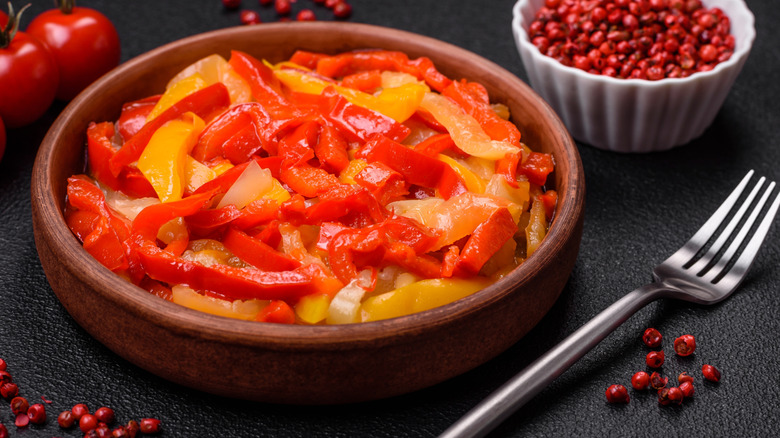When You Should Actually Add Peppers To Your Stew
From a hearty beef stew upgraded with wine to a warming vegetarian barley concoction, the world is your oyster when it comes to crafting a savory, satisfying stew. There are seemingly countless ways to make the dish, often using ingredients already in your fridge, but some elements that boost the flavor need to be treated with care. Peppers, be they spicy serranos or mild bells, require a bit more attention than other add-ins if you want to get everything they have to offer out of them.
We spoke with Emmy-nominated TV host and bestselling author Kardea Brown at the Nassau Paradise Island Wine & Food Fest about incorporating peppers into stew. Her advice was a bit more complicated than you might think. She said, "So if I'm doing a stew, I add the peppers before, take it out, add the meat, let the meat cook down, then add the peppers back in." That might seem like a lot of steps just to integrate peppers into stew, but there is a method to Brown's technique that will generate just the right level of flavor.
Why so many steps for peppers in stew?
Technically, you could just brown some meat in a Dutch oven and toss everything else in over the stove, thickening the stew with a slurry at the end, and it will be edible. Yet, most folks aren't simply looking to make something edible. Instead, they are attempting to create cuisine with rich layers of flavor and a balanced texture. Throwing peppers in at the same time as all the other ingredients can result in them losing both. Brown said, "If you're doing a stew, I like to add my peppers before, kind of sweat it out, get the liquid and everything out of it, and then add it back to the pot because you don't want to just overcook it where the peppers kind of dissipate and you lose the flavor."
It only takes 10 minutes to sauté peppers to just the right consistency, and only six or seven minutes if you boil them. Considering many stews simmer for an hour and a half to three hours on the stove to get all the flavors working together, Brown's advice starts to make sense. Peppers added at the same time as all the liquids and aromatics will become a sorry, mushy representation of their former selves after cooking for that long. It might seem like a lot of work just for a simple veg, but going to what's only a bit of extra trouble leaves you with a stew that has all the subtle heat and flavors of peppers while allowing them to retain a just-tender consistency.

